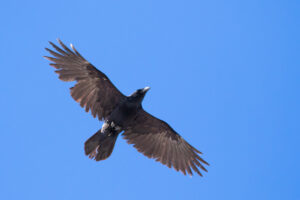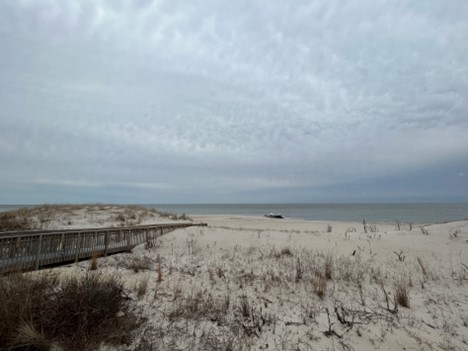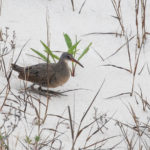Cape May Springwatch: Early-March Update by Tom Reed: Migration Count Coordinator, NJ Audubon / Cape May Bird Observatory.
Spring greetings from Cape May! The 2023 Cape May Springwatch – now in its fifth year as an official New Jersey Audubon project – commenced March 1. As always, we thank the Borough of Cape May Point for their enthusiastic support of this project, and are pleased to continue our partnership with Trektellen, which makes our in-field data entry a breeze. The entire Springwatch family is extremely grateful to Larry & Judy Winne for their unwavering and generous support that makes spring monitoring happen each and every spring. As part of a “preseason tour,” we attended a Cape May Point borough meeting in February to give an update on the Springwatch and preview the 2023 season, a summary of which appeared in last week’s edition of the Cape May Star & Wave. Additional February events included well-attended presentations at NJ Audubon’s Nature Center of Cape May and the Lower Twp. branch of the Cape May County Library system.
Joining me atop the dune crossover at Coral Avenue this season are count technicians Jonathan Layman from Medford, Massachusetts, and Harrison Hepding from Seaville, New Jersey. We’ll be hearing more about and from these two in future dispatches; be sure to stop by and welcome them!

Great Cormorants – photo by Harrison Hepding.
As in past years, the Springwatch project’s primary focus is on the visible migration count at Cape May Point, where all migratory species are recorded each morning between March 1 and May 31. How’s it going so far? Well, the typical mixed mag of early-March weather presented us with a typical mixed bag of species and numbers during the first third of the month. A few species highlights have included Common Raven (4 across multiple dates), Piping Plover (2 on March 7), Brown Pelican (3 very early individuals between March 6-7), and Northern Goshawk (March 8). Notable single-day movements/high counts included 455 Long-tailed Ducks (March 4), 65 Double-crested Cormorants on March 4 (a bit early for so many), 105 Tree Swallows (March 7), 12 Rusty Blackbirds (March 7), and 24 Pine Warblers (March 7).

Northern Goshawk – photo by Tom Reed.
Surveys for grounded migrants will once again supplement the counts at Coral Avenue this spring. Many of the species targeted during these efforts, specifically songbirds, can be rather scarce at the Coral Avenue site but are far easier to detect at nearby locations where migrants often congregate. The weather has, on the whole, not been conducive for much landbird movement yet, but low volumes of Eastern Phoebes, Song and Fox sparrows, blackbirds, and Winter Wrens have been tallied on these surveys so far.
In the non-bird department, Atlantic Bottlenose Dolphins have been present in small numbers each morning, with a period-high estimate of at least 100 on March 9 – just a sign of things to come! We have also been enjoying Harbor and Gray seals on a regular basis, with both species occasionally swimming just off the beachfront. Predictably, we have not encountered much insect life just yet, but the first Mourning Cloak of the season flitted through the dunes on March 9.

Common Raven – photo by Tom Reed.
That about covers it for now; thanks for reading to the end! You’ll hear from us again soon, but in the meantime, don’t forget that totals are live-streamed to both the CMBO website and Trektellen every day. Or better yet – stop by and see it for yourself!











